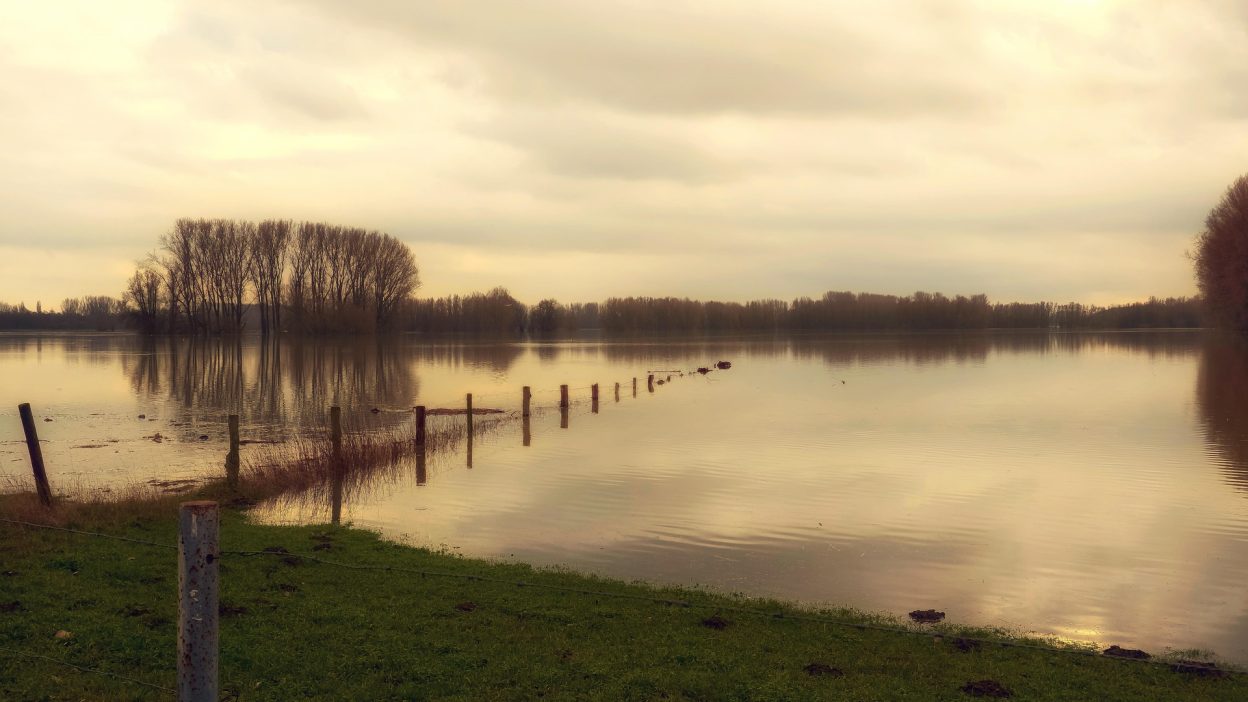The 1887 Calamity That Changed China Forever
1. Introduction
In 1887, the Yellow River Flood became one of the deadliest natural disasters in history, claiming the lives of an estimated 900,000 to 2 million people. The flood submerged around 53,000 square kilometers of land, destroying villages, crops, and livelihoods. Entire communities were obliterated as floodwaters swept through northern China, leaving millions homeless and displaced. The immediate loss of life was staggering, with many drowning, while others perished from starvation and disease. Survivors faced unimaginable hardships, enduring hunger and the spread of diseases in the wake of the flood, which caused devastation not only physically but emotionally, as families lost everything.
The destruction was equally catastrophic economically, as millions of hectares of farmland were wiped out, devastating China’s agricultural economy. Trade routes were interrupted, infrastructure was destroyed, and cities lay in ruins. Despite efforts by the government to manage the river, the dikes failed, and the flood’s aftermath left an indelible mark on the nation. The long-term effects included famine, disease, and social upheaval, with the flood’s impact lingering for generations. This disaster remains a grim reminder of humanity’s vulnerability in the face of nature’s overwhelming force and the immense suffering endured by the millions affected by the flood.
2. Geography and History of the Yellow River
The Yellow River, or Huang He, is the second-longest river in China, stretching 5,464 kilometers (3,395 miles). It flows from the Tibetan Plateau in the west to the Bo Hai Sea in the east, passing through nine provinces. Known as the “Mother River,” it has supported Chinese civilization for over 5,000 years, with fertile plains that have fostered agricultural growth and the rise of dynasties. However, its frequent floods have earned it the nickname “China’s Sorrow,” as its destructive power has caused immense loss of life and property throughout history.
- Length: 5,464 kilometers (3,395 miles)
- Agricultural importance: Cradle of Chinese civilization for over 5,000 years
- Nickname: “China’s Sorrow” due to devastating floods
The river is notorious for its high sediment content, carrying around 1.6 billion tons of silt annually. This causes the riverbed to rise, leading to floods when the water level exceeds the surrounding land. The river’s unpredictable behavior has changed its course multiple times, creating new flood plains and increasing the risk of destruction. The most catastrophic flood occurred in 1887, when the failure of dikes caused massive flooding.
- Annual sediment load: 1.6 billion tons of silt
- Flood-prone: Elevated riverbed height leads to frequent flooding
Historically, the Yellow River basin has been vital for China’s agricultural economy, supporting crops like wheat and millet. The river’s floods have shaped the country’s political and social history, prompting emperors to invest in flood control, such as dikes and levees. Despite these efforts, the river’s destructive power remained a constant challenge, emphasizing the difficulty in managing such an unpredictable force of nature.
- Agricultural productivity: Key crops like wheat and millet grown along the river
- Flood control efforts: Dikes and levees built, but floods persisted
Culturally, the Yellow River holds deep significance in Chinese art, literature, and philosophy. It symbolizes both life and destruction, reflecting the dual nature of human existence. The river’s relationship with China continues to highlight the challenges of living alongside such a powerful force of nature.
- Cultural symbol: A dual symbol of nourishment and devastation in Chinese culture
3. The Causes of the 1887 Flood
The 1887 Yellow River Flood was caused by a mix of natural and human-made factors, leading to one of the deadliest floods in history.
- Excessive rainfall: The region experienced above-average rainfall during the summer of 1887, causing the river to swell. The total rainfall exceeded 500 millimeters in some areas, putting immense pressure on the river’s banks and causing overflow that led to widespread flooding.
- High sediment levels: The river carries about 1.6 billion tons of silt every year, raising the riverbed and reducing its capacity. By 1887, the riverbed had risen so much that the water level was several meters higher than the surrounding land, making flooding almost inevitable when the river’s capacity was exceeded.
- Weakening of dikes: The levees and dikes that had been built to control flooding were weakened from years of neglect. In 1887, the river breached its banks in Henan Province after dikes failed under the pressure. These failures allowed water to flood an area of 53,000 square kilometers, submerging villages and farmland.
- Over-extraction of resources: The river had been heavily diverted for irrigation, with about 80% of the river’s water being used for farming. These diversions and artificial channels disturbed the river’s natural flow, making it more vulnerable to floods when the water volume became too great.
- Geographical factors: The region is prone to earthquakes and land subsidence, which weakened the land around the river. The river’s path also shifts periodically, altering flood plains and increasing the risk of flooding in new areas. In 1887, the shifting river caused a change in course, inundating more land and making flood predictions harder.
Together, these factors—heavy rainfall, high sediment levels, weak dikes, human interference, and unstable geography—led to the catastrophic flood of 1887, causing the loss of up to 2 million lives and submerging 53,000 square kilometers of land.
4. The Impact of the 1887 Yellow River Flood
The 1887 Yellow River Flood was one of the most devastating natural disasters in Chinese history. This catastrophic flood submerged 53,000 square kilometers of land, resulting in the loss of 900,000 to 2 million lives. The flood’s massive impact destroyed agricultural fields, farmlands, and homes, leaving millions homeless. This disaster also led to widespread famine, as the crop destruction left the population without food. Disease spread rapidly in the aftermath, with survivors lacking basic resources like clean water, food, and medical aid.
The social and economic consequences of the flood were severe. Entire villages and towns were wiped out, and the agricultural economy of northern China suffered a major setback. For years, the region struggled with rebuilding efforts, and survivors had to contend with the psychological trauma of witnessing the destruction of their communities. The flood highlighted the vulnerabilities of the Yellow River to extreme weather events and poor flood management strategies.
5. Government Response to the 1887 Yellow River Flood
The Chinese government’s response to the 1887 Yellow River Flood was slow, inadequate, and ineffective. Local officials and central authorities struggled to address the urgent needs of the flood victims, which worsened the death toll and long-term suffering. The government’s failure to maintain flood control infrastructure, such as the river’s levees and dikes, contributed significantly to the disaster’s severity.
- Lack of preparedness: The government failed to adequately repair or strengthen the levees, even though they were aware of the potential danger.
- Delayed aid: Relief efforts were delayed, and many survivors did not receive food or medical assistance in time.
- Political instability: At the time, China was experiencing political unrest under the Qing Dynasty, which contributed to the government’s inability to respond effectively.
6. Social and Economic Consequences of the 1887 Flood
The 1887 Yellow River Flood devastated China’s social and economic structures. Entire communities were displaced, and millions of hectares of farmland were lost. The agricultural backbone of northern China was nearly destroyed, leading to widespread food shortages and economic collapse. The flood also contributed to social instability, as poverty, hunger, and disease spread through the affected regions.
The loss of lives and property, combined with the destruction of infrastructure, made recovery difficult. Famine became a pressing issue, and many people were forced to migrate in search of food and shelter. The psychological toll of the flood left a lasting impact on those who survived, with families torn apart and traditional societal structures disrupted.
7. The Role of the Yellow River in Chinese History
The Yellow River has been a central figure in Chinese civilization for over 5,000 years. Known as the “cradle of Chinese civilization,” it has sustained agriculture, supported trade, and facilitated the rise of numerous dynasties. However, it is also notorious for its destructive floods, with the 1887 flood being one of the most significant events in its history.
The river’s dual role as both a source of prosperity and a cause of devastation has been central to Chinese cultural identity. Over the centuries, the Yellow River has shaped the political, economic, and social history of China, influencing migration patterns, settlement areas, and the rise and fall of dynasties. Its unpredictability continues to be a defining feature of China’s struggle to balance development with flood control.
8. Technological and Infrastructure Challenges in Flood Management
The 1887 Yellow River Flood exposed the limitations of China’s flood control infrastructure at the time. Despite centuries of effort to manage the river’s unpredictability, the government’s reliance on outdated dikes and levees contributed to the flood’s severity. The river’s high sediment load, which raises its riverbed, made it increasingly prone to floods, with the 1887 flood being the most catastrophic example.
- Weakened dikes: By 1887, many dikes had been poorly maintained and failed to withstand the pressure from rising waters.
- Insufficient technology: The available flood control technology was inadequate to deal with the increasing sediment levels and flood risks.
- Increased vulnerability: As the riverbed rose, the surrounding land became more susceptible to flooding, and without proper infrastructure, the region was left vulnerable.
9. Long-Term Environmental Impact of the 1887 Flood
The 1887 Yellow River Flood caused lasting environmental damage in northern China. The inundation of vast areas of land destroyed ecosystems and disrupted local agricultural practices. Fertile soil was lost, and farming became impossible in many areas for years. The flood also left behind sediment deposits, altering the landscape and making recovery more challenging.
- Loss of farmland: Millions of hectares of agricultural land were destroyed, affecting food production for years.
- Environmental degradation: Floodwaters carried debris and pollutants, further degrading the region’s natural resources and agricultural potential.
10. Cultural and Psychological Impact of the 1887 Flood
The 1887 flood left a profound psychological impact on those who lived through it. The loss of family members, homes, and livelihoods created long-lasting emotional scars. Survivors faced not only the trauma of losing everything but also the ongoing grief and shock of the widespread devastation. Many communities were left in a state of disbelief and despair.
- Psychological trauma: For years, survivors struggled with the emotional toll of witnessing such catastrophic destruction.
- Cultural symbolism: The flood became a symbol of nature’s destructive power, influencing Chinese folklore and literature for generations.
11. Lessons Learned from the 1887 Flood and Future Flood Control Efforts
The 1887 Yellow River Flood taught China valuable lessons about flood preparedness, infrastructure maintenance, and disaster management. In the years following the flood, China worked to improve its flood control systems by building more robust levees and dikes. However, the lessons learned were not limited to infrastructure alone.
- Flood preparedness: The need for early warning systems and effective governance in times of disaster became clear.
- Improved infrastructure: New flood control projects and technological advancements helped to reduce the risk of future catastrophic floods.
12. The Legacy of the 1887 Yellow River Flood
The legacy of the 1887 Yellow River Flood is still felt today, as the river continues to be a symbol of both China’s resilience and vulnerability. The disaster led to significant changes in flood management strategies, helping China improve its disaster preparedness. However, despite advancements in technology and infrastructure, the Yellow River remains a challenge due to its high sediment content and unpredictable behavior.
- Ongoing flood management: China continues to work on flood control through modern technologies and updated infrastructure.
- Cultural impact: The 1887 flood is remembered in Chinese culture and history, serving as a reminder of the devastating power of nature and the need for preparedness.
FAQs
1. What caused the 1887 Yellow River Flood? The flood was caused by a combination of excessive rainfall, high sediment levels in the river, weakening of dikes, over-extraction of river water for irrigation, and geographical instability, such as shifting river courses and land subsidence.
2. How many people died in the 1887 Yellow River Flood? The flood caused the deaths of between 900,000 and 2 million people, making it one of the deadliest natural disasters in history.
3. How did the Chinese government respond to the flood? The response was slow and ineffective due to political instability within the Qing Dynasty. The government failed to reinforce or repair dikes, and relief efforts were delayed, leaving survivors without aid for weeks.
4. What were the long-term environmental effects of the flood? The flood caused the loss of fertile soil, the destruction of local ecosystems, and the contamination of water supplies with debris and pollution, leaving a lasting environmental impact on northern China.
REFERENCE LINKS:
China’s Path to Modernity, Mirrored in a Troubled River
History of Chinese Floods” – BBC History
Environmental Impact of the 1887 Yellow River Flood” – China History Forum
“History of the Yellow River” – Encyclopedia Britannica
China’s Yellow River Floods” – National Geographic
“The 1887 Yellow River Flood” – Wikipedia
YT links:
1887 , flood of the Yellow River in China
China’s Yellow River: Taming the cradle of Chinese civilisation
A Deliberate Disaster – Chiang Kai Shek Floods the Yellow River
PICS:




